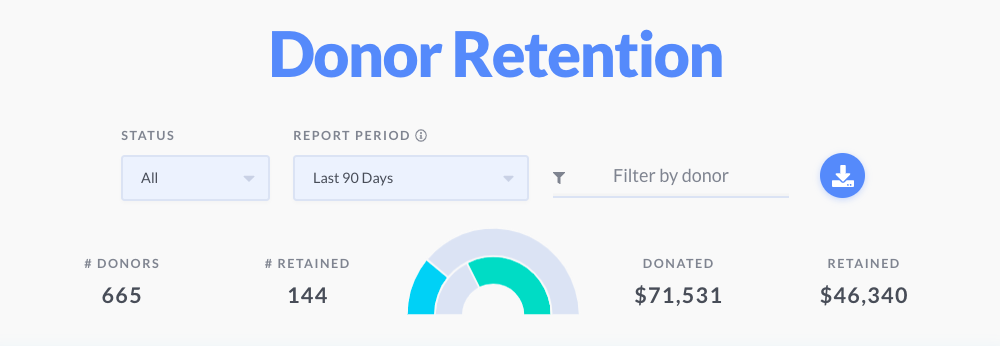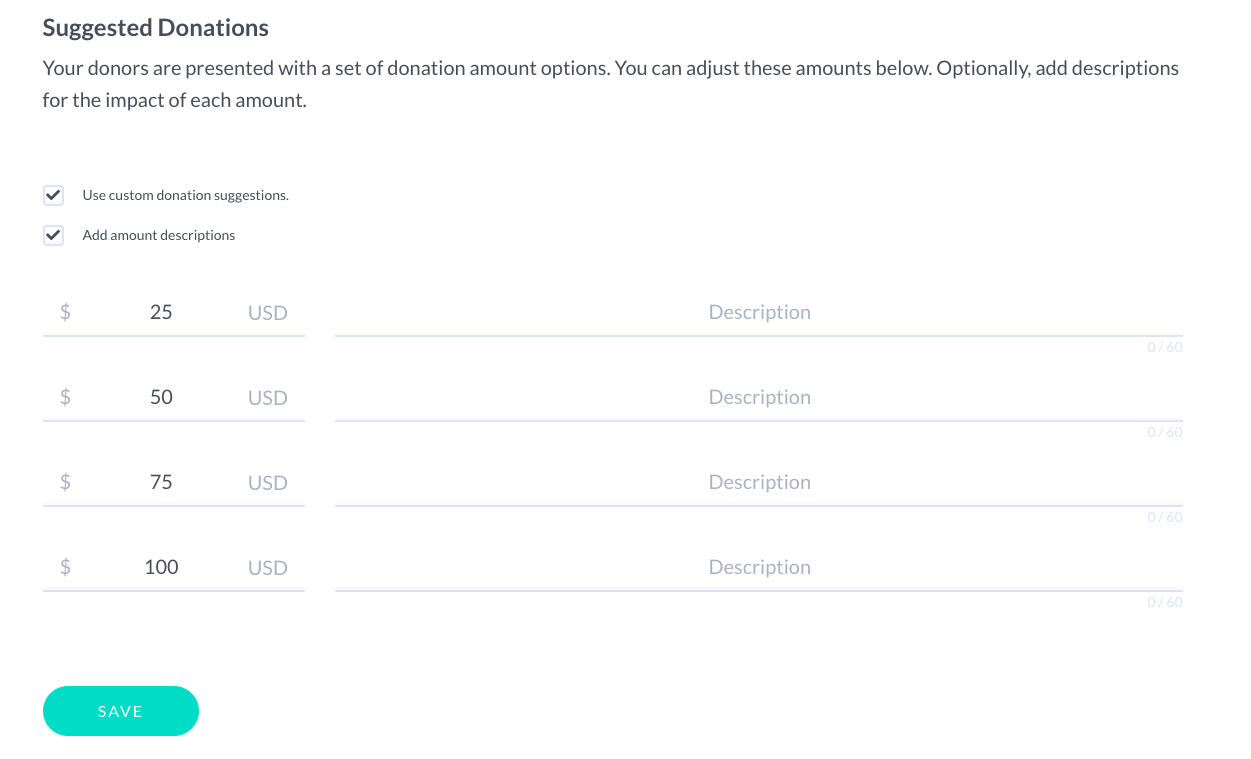Donor retention tips to help you make the most of your year-end appeals
“Donor retention” is one of the most heated topics of discussion in the nonprofit sector. How do you keep donors engaged? And how do you ensure they’ll donate again? What makes donors leave? It seems nonprofits are still figuring this out.
According to the Association of Fundraising Professionals’ 2018 Fundraising Effectiveness Report, nonprofits retain less than half of the donors they acquire. And given how much time, effort and budget the average nonprofit puts into donor acquisition, that’s a major problem.
December is the most high-stakes month all year for fundraisers. While donor retention is a year-round effort, here’s how your nonprofit can make it a priority for end-of-year fundraising.
Donor Retention Basics
Donor retention is part art, part science. It’s a mixture of testing, evaluating data, crafting compelling fundraising appeals, and understanding what stirs donors’ emotions. And there are a few key pieces to the donor retention puzzle you should know.
Calculating Donor Retention
Donor retention is simple: it’s the number of donors who gave in 2018 who also gave in 2019. You can grab those numbers from any two years to see how your nonprofit is doing at retaining donors.
But we’ve made it even easier for nonprofits to retain donors. Mightycause users can export a donor retention report that finds all the donors who haven’t given this year and neatly packages them in a spreadsheet for you. This means you can spend less time hunting down the data and more time actually connecting with these donors.
And we also do the math for you and make your donor retention rate readily available on your nonprofit’s welcome page!
Prompt Thank Yous
There’s a reason development folks at nonprofits are so obsessed with thank yous: research shows that donors who are thanked within 48 hours of making their donation are four times more likely to donate again. It’s a key part of donor retention, and it needs to happen fast.
Staying in Touch
So much of donor retention is just relationship-building, and as we all know, you need to stay in touch in order to build and maintain a relationship. This means not only communicating with them often, but communicating better. And nonprofits can communicate better and build stronger relationships with donors in a few ways:
- Personal contact with staff and/or volunteers at the organization (which is especially important for major gift donors or prospects)
- Personalizing their communications to acknowledge their history with the organization and their interests
- Communicating with donors in different ways, on different channels (for instance, moving a social media follower to your email list, someone on your email list to your mailing list, and so on)
- Paying attention to which types of messaging appeal to which donors
Donor Retention Strategies for End of Year
With the understanding that donor retention is an ongoing process and needs to happen throughout the year, we’ve put together some action items that will help you focus on donor retention for your end-of-year appeal.
1. Identify Your Donors
Before you can start anything else, you’ll need to understand who you’re trying to retain. The easiest way to do this is by pulling all the information you need, which you can find in your donor retention report.
This report gives you all you need to know to hatch your year-end donor retention plan and get started contacting donors.
Retained Donors
So, that list of donors your nonprofit has retained from 2017 deserves some special attention. These are donors who have shown up to support you year after year, and when you’re planning your end-of-year appeals, you’ll want to acknowledge how important these donors are to your nonprofit.
At the very least, plan some segmented emails to this group of donors. You’ll want to focus on gratitude in these emails — these are the donors who keep you afloat. Using language like “because of you” and “we know we can count on your support again” acknowledges their important contribution to your cause. And because that email is more personal to them, it will make them more likely to donate again.
If you really want to ensure you go the extra mile to show this group some love, instead of just emailing them, call them to talk about your campaign and ask for their continued support. If someone has given a lot, or increased the amount they gave in 2018, invite them to your office! Send them a personalized note in the mail! Not only are you garnering support for your year-end campaign, you’re laying the groundwork for these donors to come back and donate again in 2019 and beyond.
Almost-Lapsed Donors
A “lapsed” donor is a donor who used to give to your organization, but for whatever reason, stopped. And, generally, a donor shouldn’t be consider lapsed until it’s been at least one year since they donated. So, this group of donors who gave in 2017 but not 2018 is almost lapsed. Your goal in your year-end appeal is going to be to get them to come back and make a donation before 2018 ends.
You’ll do that by working on cultivating the relationship with these donors and asking them to come back and support your nonprofit in 2018. Here are few ways you can get these donors back on board:
- Personalized outreach. You can send them your regularly scheduled email blasts, sure, but also plan for some personal touches. Sending an email from your own email address, sending a personalized letter or postcard, or hopping on the phone to let them know about your campaign, will help bring them back. (Don’t be afraid to enlist volunteers in this!)
- This also gives you the opportunity to dig for more information — why haven’t they made another donation? Did they get your last e-newsletter? Do you have their current email and mailing address? What’s their preferred method of communication?
- Thank them for their previous support. We’ve said it before and we’ll say it again: there is no such thing as thanking a donor too much! Even if their last donation was 18 months go. Lead with gratitude, and you’ll find that the donor is warmer toward making another donation.
- Show your impact. What did you accomplish in 2019? They donated in 2018, so they are part of that success, and those milestones. Let them know that in order to have another successful year, you’ll need their support again.
Other factors to consider
Look deeper at this group of donors.
- Are there any retained donors who gave more in 2019 than they did in 2018? This group warrants some special attention; don’t take their support for granted! Make special attempts to reach out to them and ask for their continued support (and perhaps see if they’re willing to give even more to your year-end campaign).
- Are there any retained donors who gave less in 2019 than 2018? These donors may be in danger of lapsing! Make sure you impress upon these donors how much their donation means, and if possible, follow up with them to get feedback about their experience as a supporter.
- Can you find any demographics information based on a donor’s history? For instance, if you run an animal rescue, and you notice a donor has given to multiple fundraisers for cats but no fundraisers for dogs … well, you’ve got an important piece of information about that donor, right? You can understand what motivates them to give, and tailor your appeal to them accordingly. See if you can split these donors up into groups based on interest to fine-tune your messaging even further.
2. Ask
Okay, so this one seems obvious, right? But, believe it or not, some nonprofits can dance circles around asking in email after email.
How do they do that? There’s lots of ways. We’ve seen call-to-action buttons that say “Thank you for your support” (instead of “donate now”) — putting the thank you before the ask! Sometimes it’s soft language like “support.” Yes, “support” is another way to say “donate,” but it’s not directly asking them for money, the donating part is implied with “support.” If you want something from someone, you’ve got to ask. Directly.
Beyond just being direct with your call to action, here are some ways you can be more direct and effective with your appeal.
Suggest Specific Amounts
With donors who have given to your nonprofit before, you can use their donation history to make a specific, targeted ask. How much did they give in the past? You can probably expect to give around the same amount this year, so try bumping them up to the next level. Or even ask them to make a recurring monthly commitment to your organization.
“Because of you” language is especially effective when making an ask to a donor who has given before: “Because of you, we were able to [INSERT ACCOMPLISHMENT], provide [NUMBER OF SERVICES] in 2019, and continue our mission of [WHATEVER YOUR MISSION IS]. Can we count on you to give [AMOUNT] to support our efforts in 2020?”
Utilize Suggested Donation Amounts
All Mightycause users have the ability to customize the suggested donation amounts in your nonprofit’s donation process. This is a powerful little tool, because these suggestions are made to your donor right after they click “Donate” on your Mightycause page, catching them at a critical point in the donation process — when they’re deciding how much to give.
To customize these, go to Donor Experience in your Mightycause Manager.
Ideally, you’ll want to weave these into your campaign messaging, so donors are more compelled to give in the amounts you suggest. You also have a description you can use to explain why these amounts are meaningful to your nonprofit and make a compelling case for donating in these amounts.
Another tip is to use the holiday spirit to help frame your suggested donation amounts. What would that amount provide for your nonprofit? Can you tie it back to a real-world item or service? Donors love giving things to charity more than money, so if you can turn a $30 donation into, say, feeding a family in your community for a week, it’ll make it more likely people will give in that amount.
3. Follow Up
So, if you’ve done the work, compiled the lists, sent your emails, done the outreach, and gotten a donation, what’s left to do? Don’t stop once you’ve gotten the donation! Donor retention doesn’t end with getting a 2018 donor to donate again in 2019. It’s an ongoing process, and that process doesn’t stop after the donation is complete!
Create a Plan
Your job when you’ve got the donation is to start retaining them for 2020. You’re laying the groundwork for a continued relationship with the donors you’ve retained, and future donations.
Here are a few things to consider adding to your follow-up plan:
- Handwritten (or at least personally signed) thank you cards
- A personal email from someone on your staff (like a Development Director or your Executive Director)
- A phone call from a staff member or volunteer
- A series of emails
- An end-of-year survey to find out what issues are most important to donors
Whatever your plan is, it’s vital that you make one. If donors don’t hear from you until the next time you’re asking them for money, they are not likely to stay engaged in your nonprofit’s work and cause.
Report on Your Results
As part of your follow-up plan, you should include an email early in the New Year reporting on the results of your campaign. But don’t stop reporting after that email! Let them know what you’re up to year-round, because those are all things their donations helped make possible.
Include them in your e-newsletters, send a physical newsletter if you circulate those, and celebrate milestones and accomplishments with them as they happen. (Using “because of you” language.)
Need End-of-Year Fundraising Ideas & Tips?
We’ve got an ebook for that! It’s free to download, and contains end-of-year fundraising ideas, best practices, and tips for engaging donors.




